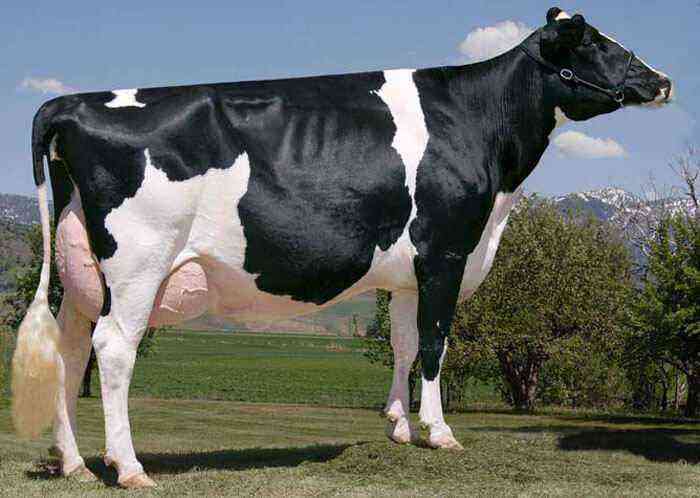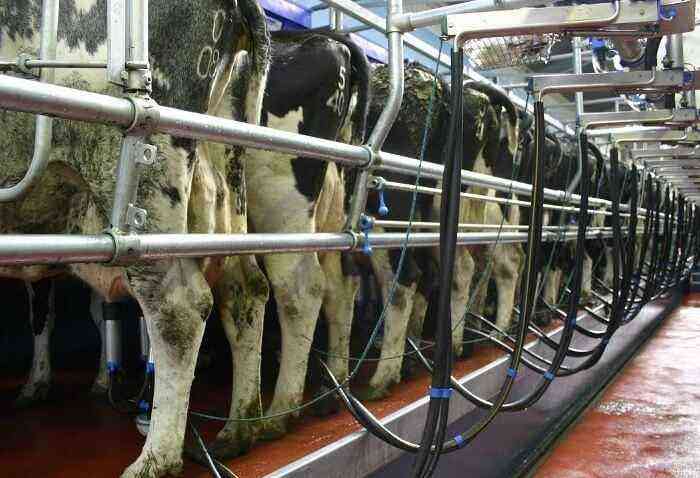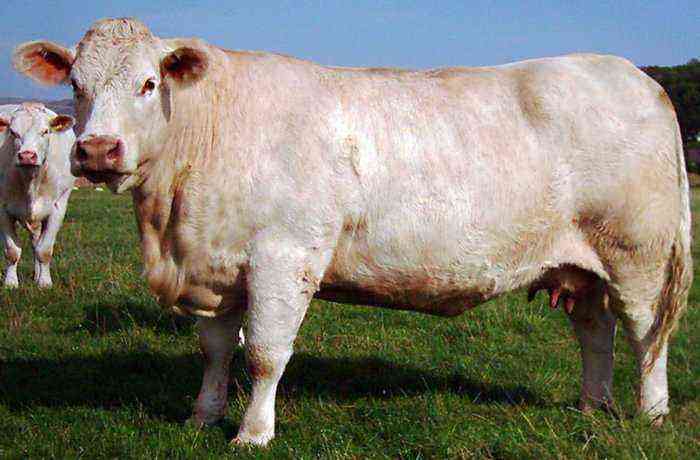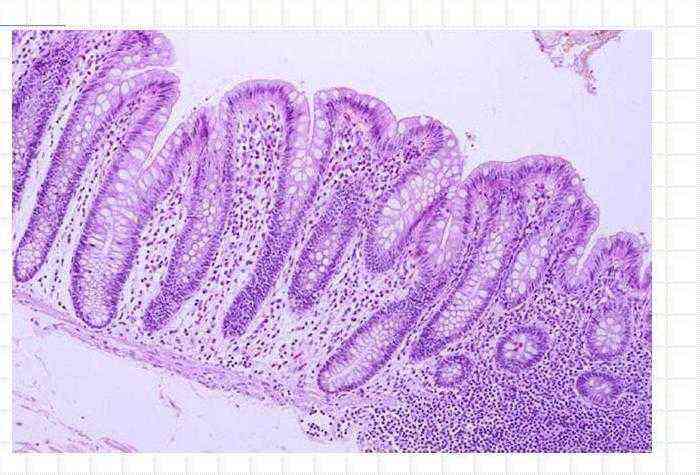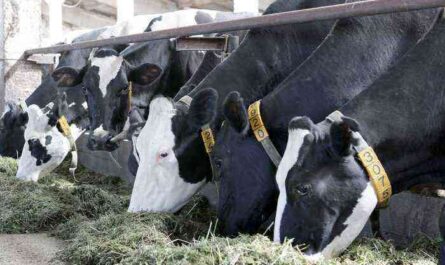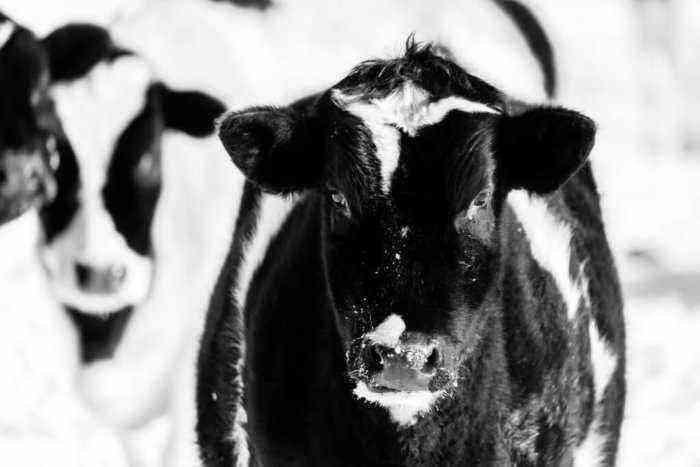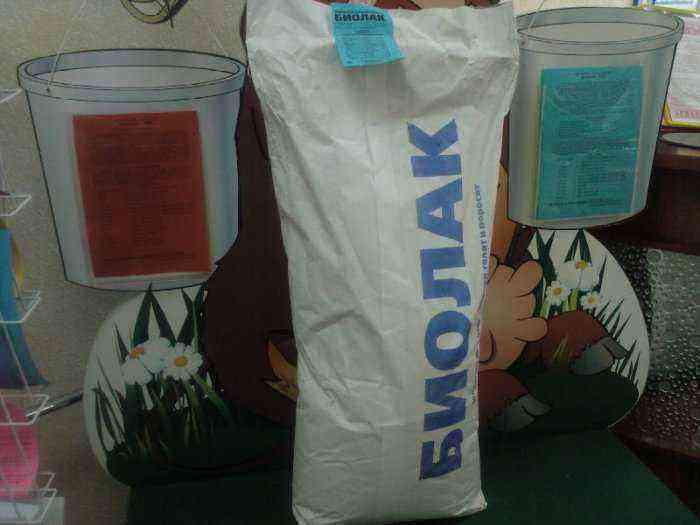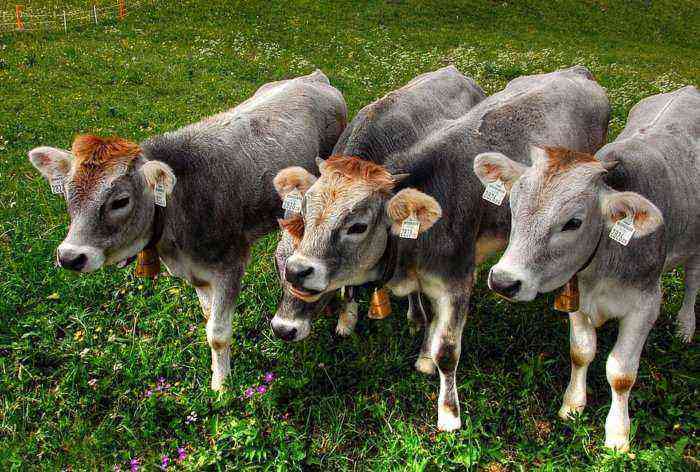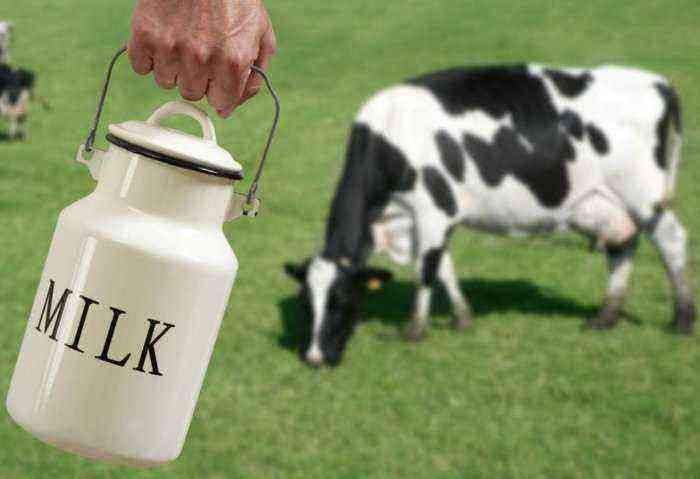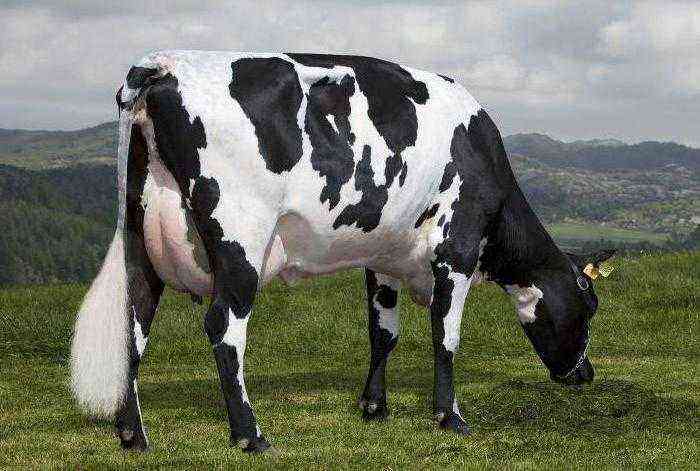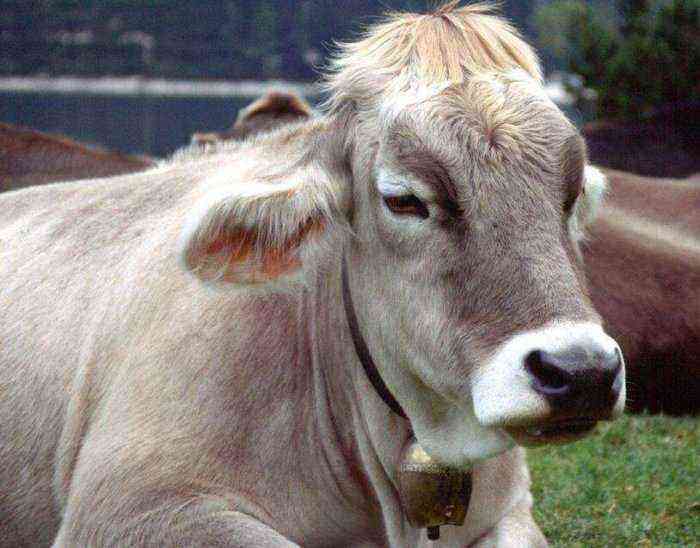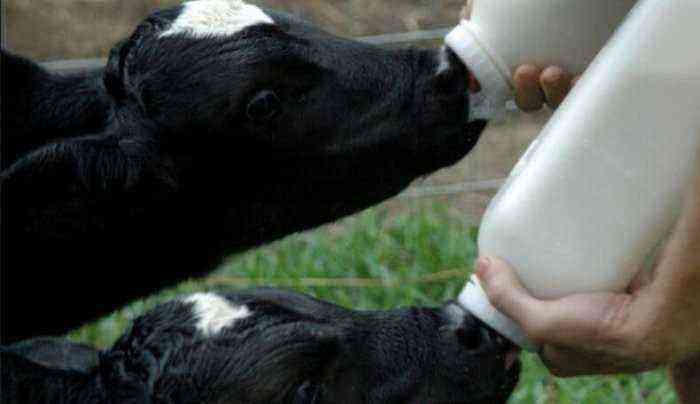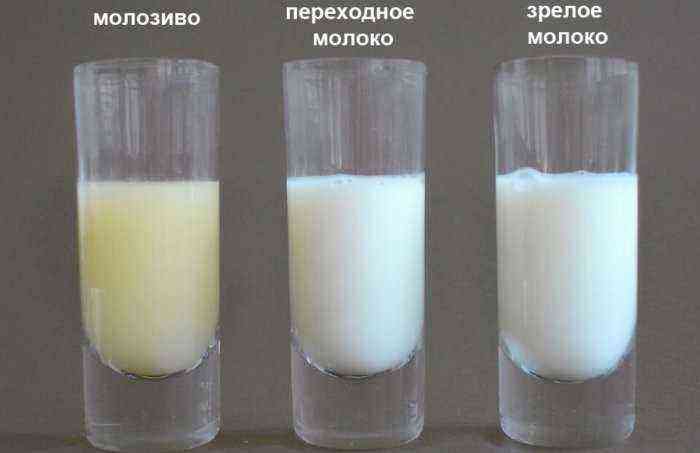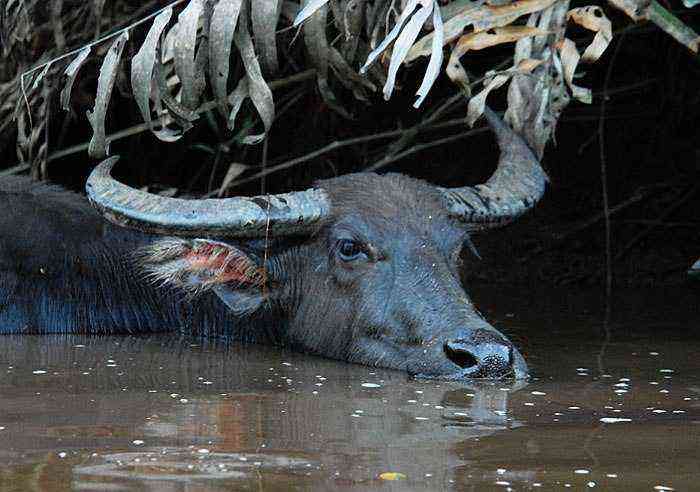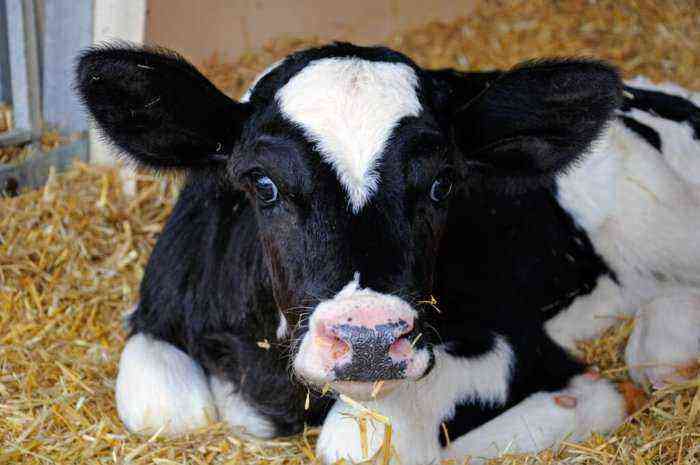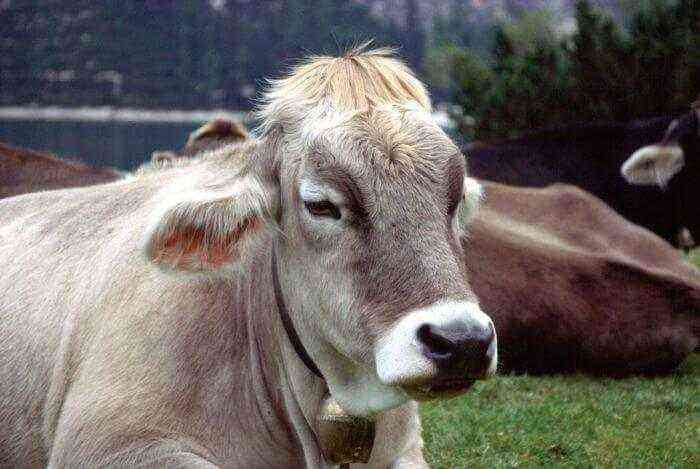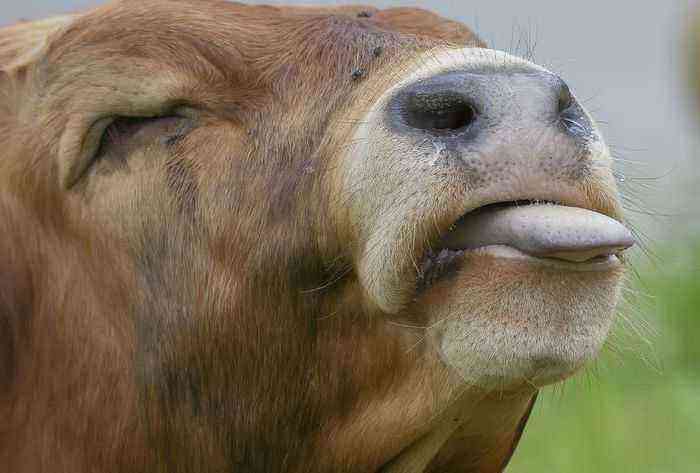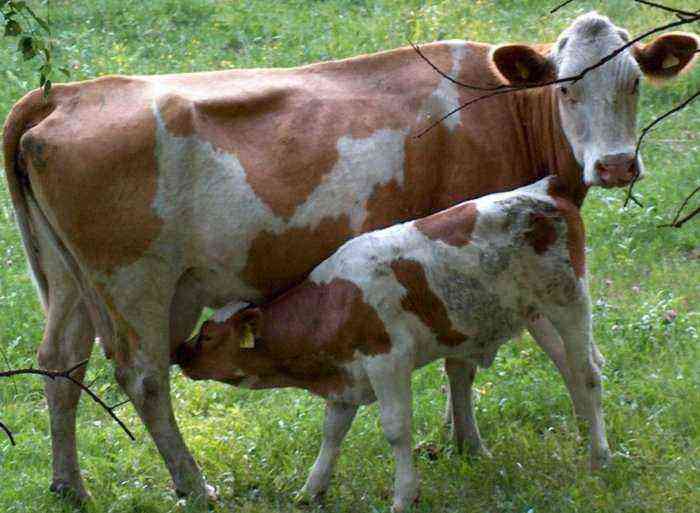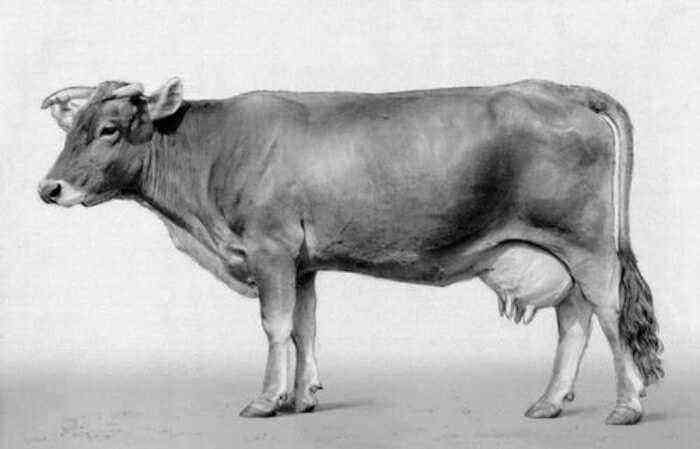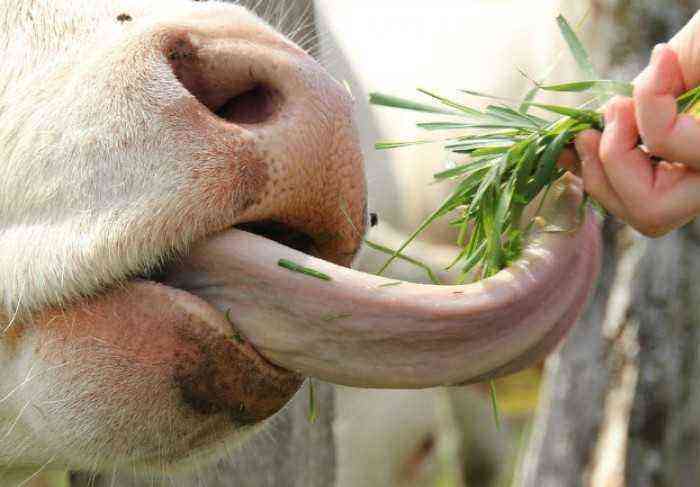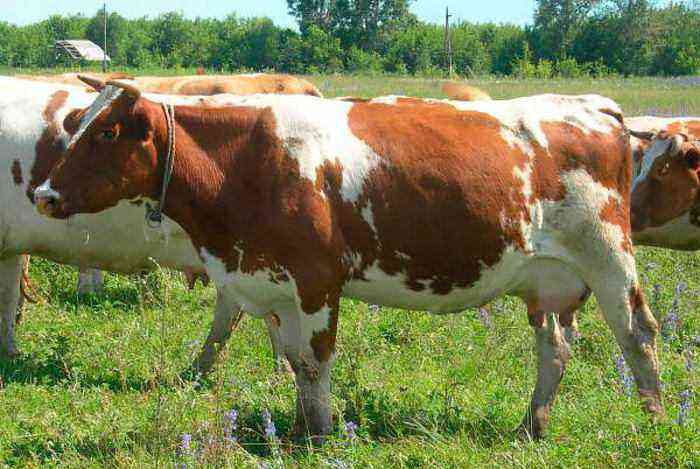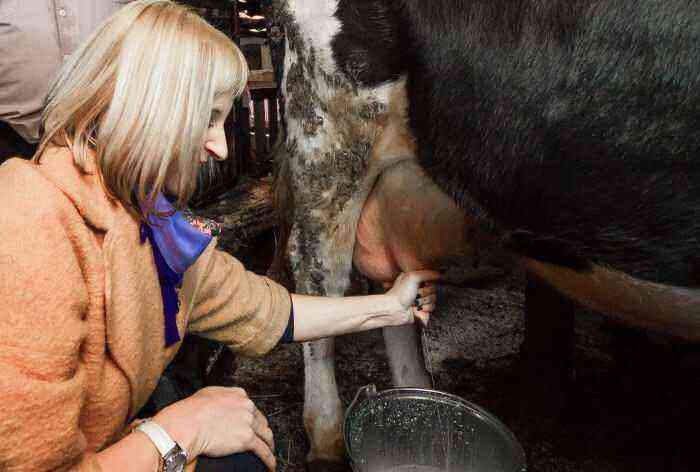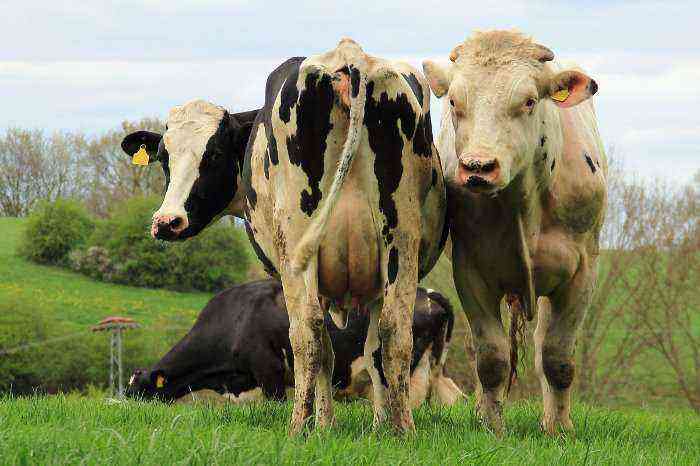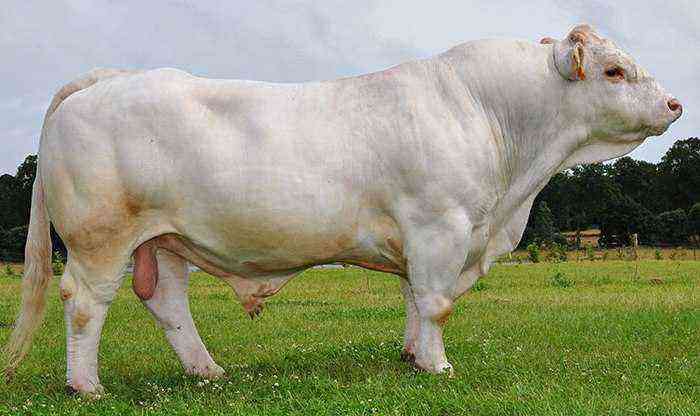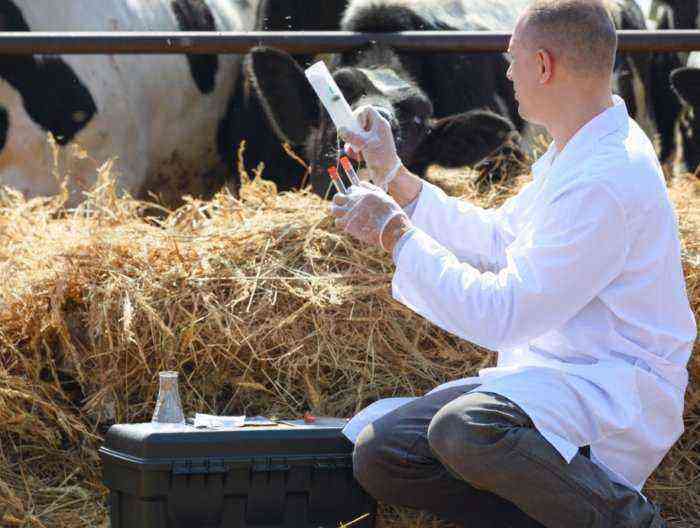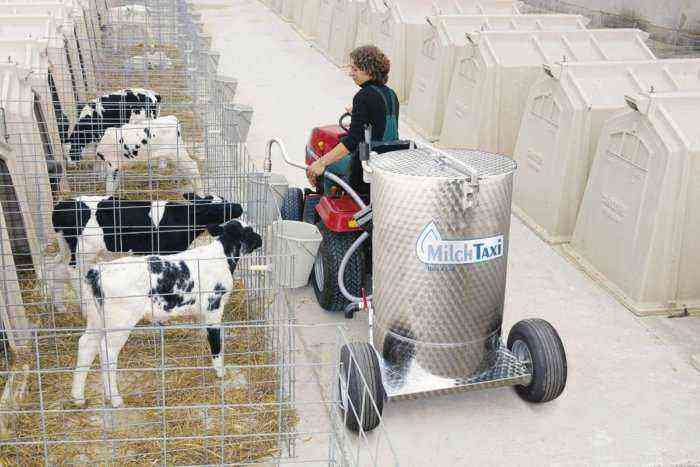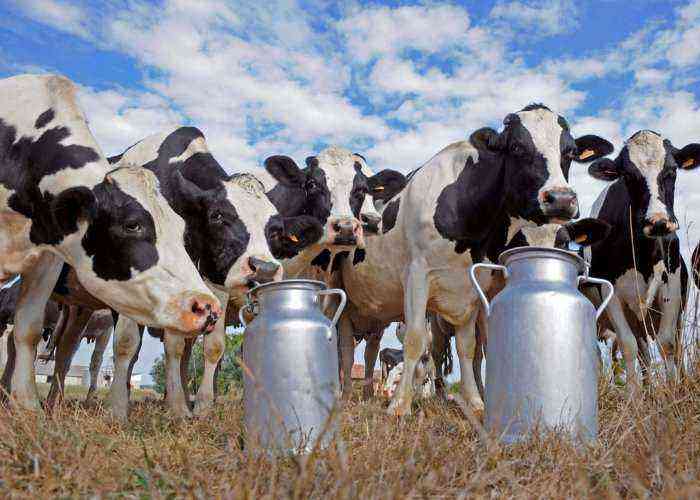There are 250 cow breeds in the world. Cattle are popular due to their high productivity. Farmers try to choose the most productive types in order to obtain high-quality milk and meat. When choosing a variety of cows, it is necessary to take into account the peculiarities of its residence, care, feeding and reproduction. This knowledge will help to properly raise the animal and create optimal living conditions for it.
Cattle
Characteristics and types
All types of cows are classified into:
- Meat.
- Dairy.
- Combined or dairy and meat.
The first type is characterized by rapid weight gain and low productivity. They are grown for the purpose of slaughter, they are unsuitable for milk production. A characteristic feature of beef cows is tender and soft meat. Animals of the dairy type are not able to boast of such indicators. Their body is elongated, and the cow herself is able to consume about a centner of hay per day. This is due to the high productivity of dairy cows. During the day they are milked at least 2 times, which allows you to get an impressive increase in milk. Animals of the combined type are universal, their meat is tasty and high-calorie, and the amount of dairy product obtained is not lower than that of dairy breeds.
Reference. The most common are 17 breeds of cows. The features of each of them will be discussed in detail.
Dutch
The most ancient breed is the Dutch. Its distinguishing feature is high productivity, due to which the animal has become widespread in 33 countries. A feature of the Dutch variety is considered to be a proportionally developed torso, strong muscles and short legs. The modern appearance of cattle was formed only by the 20th century. One animal is capable of producing about 4000 liters of milk annually, and the fat content of raw materials is 4%. Another plus of the Dutch cow is the rapid development. A newborn calf weighs 40 kg, and an adult is gaining about 550 kg. In bulls, the weight exceeds the declared figure by 2 times.

dutch cow
Simmental
This breed is from Switzerland. The animal has developed muscles and gives excellent milk. This is due to grazing in alpine meadows surrounded by lush green grass. Thanks to the intervention of specialists, the Simmental type became universal. It is considered the most common in the Russian Federation. The performance of the Simmental breed is at a high level, one animal is able to “give” 5000 liters of milk per year. When kept in special conditions, the presented indicator reaches 9000 liters.
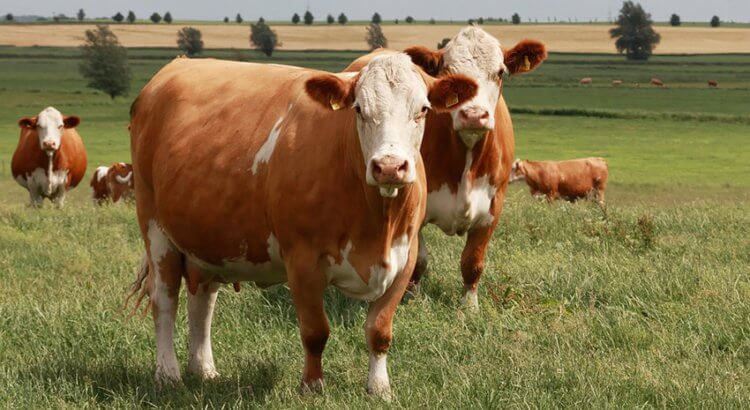
Simmental breed of cows
Ayshirskaya
The Ayshire cow breed originates from Scotland. The animal is popular due to the rapid growth of the young. It is noteworthy that the breed has a small mass, but the performance is high. On average, the weight of one individual is 450 kg, and the amount of milk is 5000 liters per year. The fat content of the resulting dairy product ranges from 4-4,3%.
In addition, it is adapted to living in harsh climatic conditions. Growing and keeping an animal at high ambient temperatures is difficult. Increased rates negatively affect the general well-being of the animal and the quality of the raw materials produced.
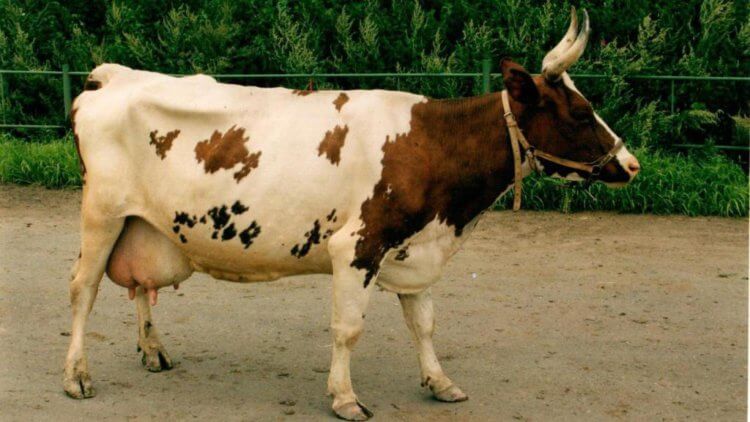
Ayshir breed of cows
Dzherseyskaya
Individuals of the Jersey type are considered the most ancient representatives of cattle. The first animals appeared on the territory of England, the authorities forbade mixing them with other breeds. Today, the Jersey type is distributed throughout the world.
Important! A distinctive feature of individuals is increased aggressiveness. Care must be taken when caring for them.
As for productivity, this indicator is at a low level. Milk is non-fat, and its amount is negligible. In a year, one individual produces no more than 3500 liters of milk, in some cases its fat content reaches 7%.
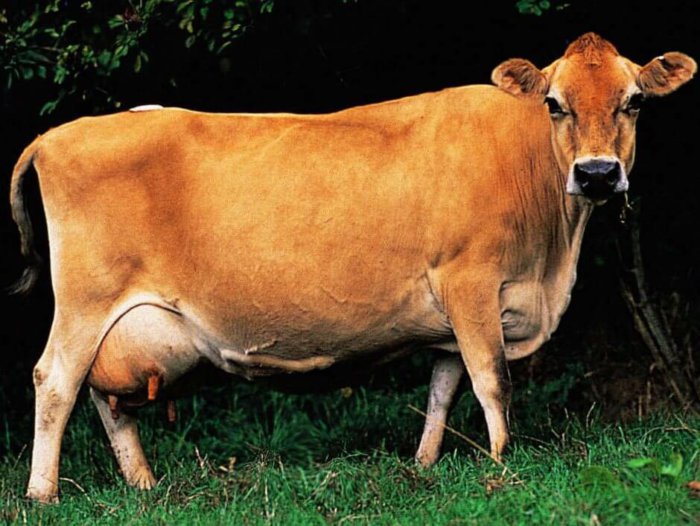
Jersey cow
Shvitskaya
The Schwyz type refers to the dairy and meat direction. Its homeland is Switzerland, hence its name. Individuals are brown in color and have short horns. In Russia, the first livestock appeared in the distant 19th century. On average, the weight of one individual is 600 kg, the weight of bulls reaches 900 kg. With proper care, one cow produces 4500 liters of milk per year, with a fat content of 3,7-3,8%.

Swiss cow
Holstein
The Holstein cow breed originates from America. It is considered one of the most highly productive. Useful “properties” of the animal were noticed by German farmers, which increased its popularity in Germany. The mass of the animal is 600 kg, the productivity per year goes beyond 7000 liters. Milk has a moderate fat content, not exceeding 3,7%. To increase productivity, the breed is crossed with black-and-white, this allows you to increase the amount of dairy product up to 200 liters.
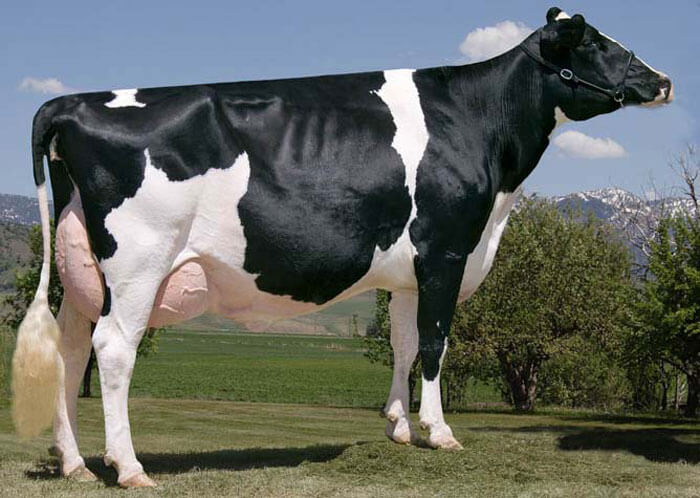
Holstein breed
Kholmogorskaya
The Kholmogory variety is a representative of the dairy type. When growing an animal, a special bias is made on the quantitative indicators of the produced raw materials and its percentage of fat content. To this end, farmers are forced to create special care conditions. With proper feeding, one individual is able to produce 6000 liters of milk per year, while the weight of an adult cow is 550 kg.
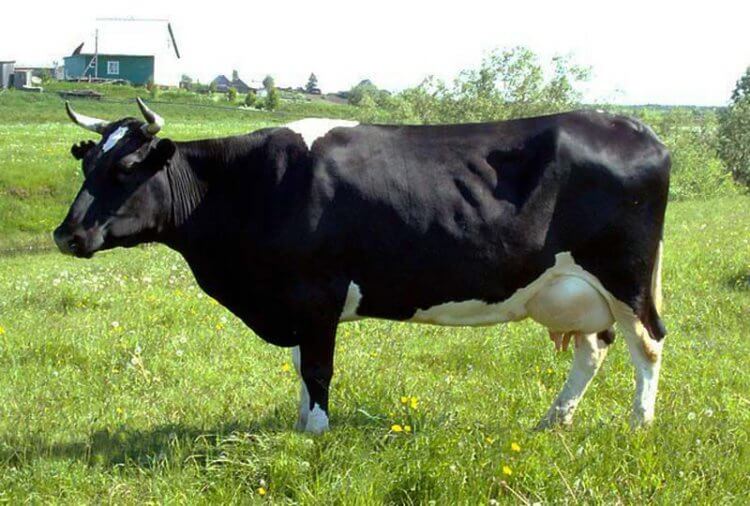
Kholmogory breed
black-and-white
The black-and-white variety was created during the Soviet Union. The wide popularity of cattle is due to high productivity and high-quality meat. This breed has a non-standard body, large size and deep chest. In a year, one individual produces 6000 liters of milk, the fat content of which is 3,5%. To increase the level of productivity, many farmers carry out breeding work.
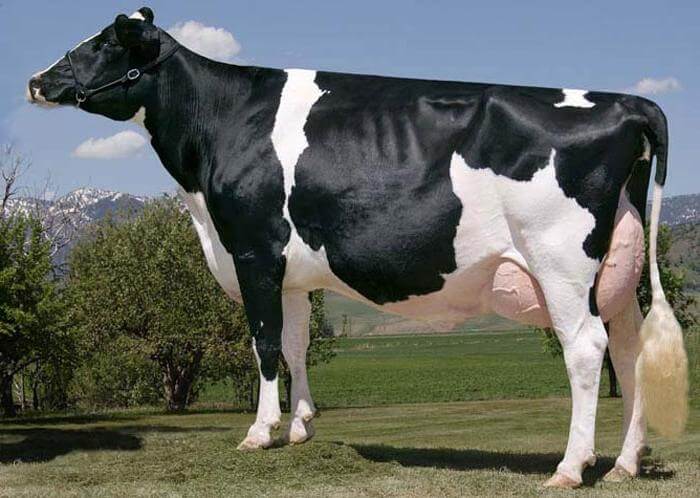
Black-motley breed of cows
Kostromskaya
The Kostroma breed belongs to the milk-meat type. The first individuals were bred on the territory of the Russian Federation, by crossing the Algauzian and Swiss varieties. The Kostroma type was officially approved in 1945.
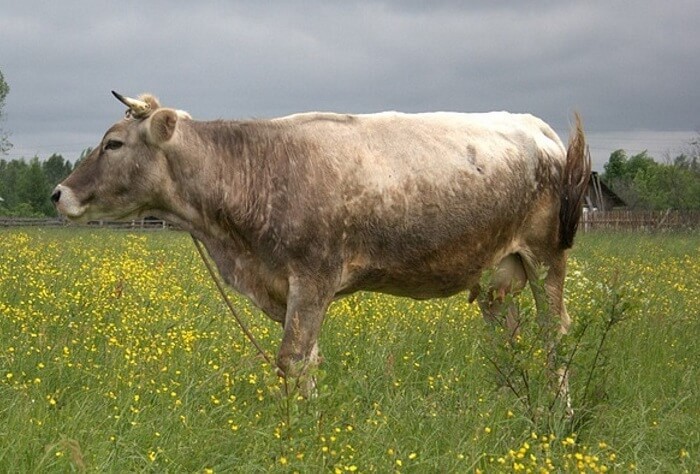
Kostroma cow
This breed has a gray or brown color. At the same time, the animal is large, with a powerful and muscular physique. The productivity per year is 5000 liters of milk, with a fat content of 3,7-3,9%. The mass of a cow does not exceed 650 kg, and a bull – 900 kg.
Yaroslavl
The Yaroslavl variety is considered one of the best on the domestic market. Dairy-type cattle produce 5000 liters of milk per year, and their fat content exceeds the standard 4%. Distinctive features of the breed – “glasses” around the eyes and white color. The animal has underdeveloped muscles with angular shapes. A unique feature of the Yaroslavl species is the ability to live in harsh climatic conditions.

Yaroslavl breed of cows
Red steppe
This kind of cattle originated from the picturesque steppes of Ukraine. In farming, it is known as the hardiest and most productive breed. Individuals can adapt to any climatic conditions, without a negative impact on the amount of production.
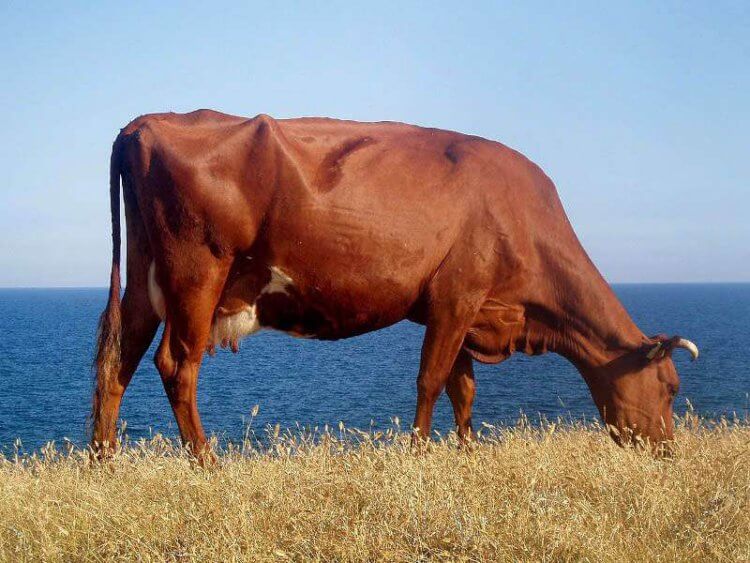
Red steppe breed
The weight of the animal is not more than 520 kg, the productivity per year is 5000 liters of milk. As for meat qualities, they are not sufficiently developed. To increase the level of productivity of raw materials, the red steppe variety is crossed with the Angler variety.
Hereford
The Hereford breed is popular all over the world, the amount of milk produced is minimal. A distinctive feature of the presented type is the high quality of meat. Marble products are in great demand. The animal is able to live in any conditions and quickly adapt to the climate. On average, life expectancy is 18 years, and the weight of an individual is 850 kg. Bulls are in a more developed weight category, up to 1350 kg.
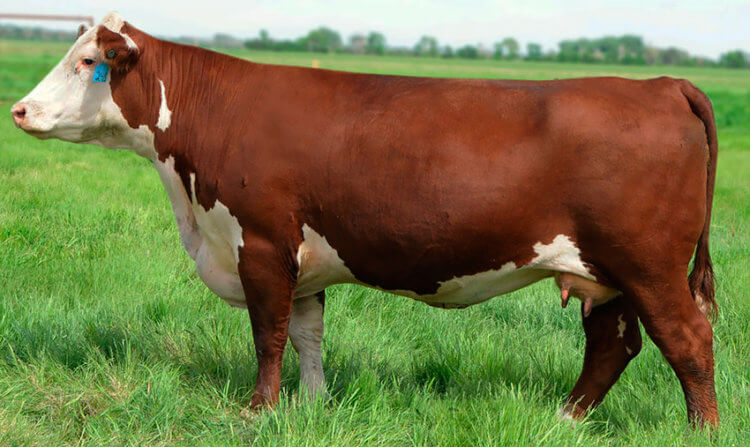
Hereford breed
Bestuzhevskaya
Among all breeds of cows, Bestuzhevskaya occupies an honorable place. It belongs to the meat and dairy type, grown exclusively at home. It gained particular popularity from the beginning of the 19th century. A distinctive feature is a bright red color, turning into a brown tint. The average weight of heifers is 500 kg, bulls – 800 kg. One individual gives 3500 liters of milk annually, with a fat content of 4%.
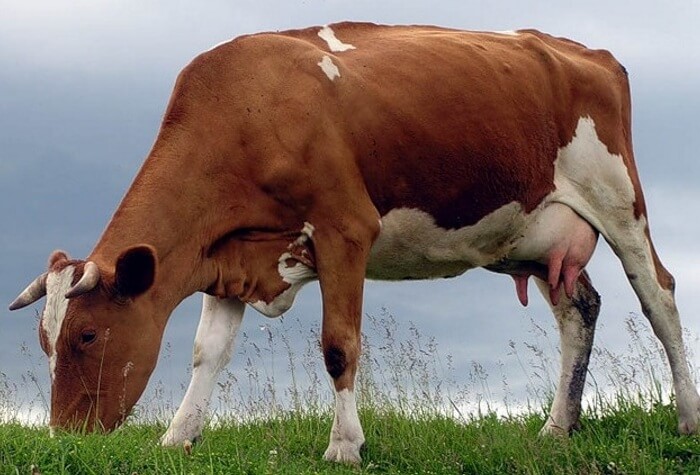
Bestuzhev cow
Lebedinskaya
The Lebedinsky variety belongs to the meat and dairy class and is characterized by high productivity. It was bred in 1930 in Ukraine, it is distinguished by a gray-brown color with a massive body. The mass of bulls is up to 1000 kg, and heifers no more than 550 kg. Milk productivity does not exceed 6000 liters of milk, with a fat content of 3,8-3,9%. The main advantage of the Lebedinsky variety is a high weight gain and rapid development.
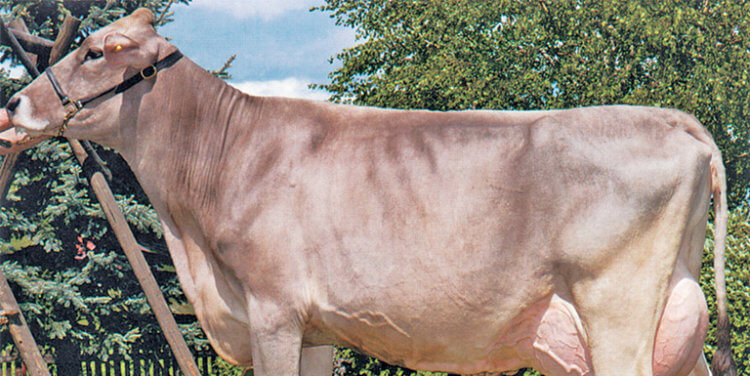
Lebedinsky breed
Тагильская
A distinctive feature of the Tagil breed is heterogeneity. There is no standard “external” appearance and color. Many individuals are similar to representatives of the Dutch breed, others closely merge with local cattle. The weight category of animals does not exceed 600 kg for heifers and 900 kg for bulls. Every year, one individual gives about 4500 liters of milk with a fat content of 4,2%. Meat quality is at a high level.
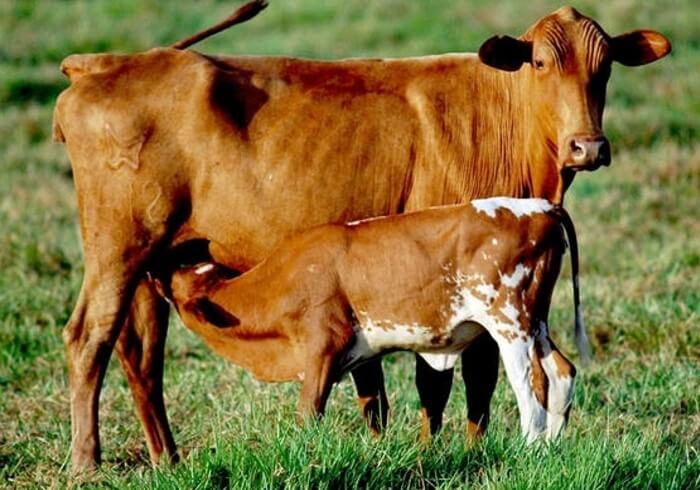
Tagil breed of cows
Kurgan
The Kurgan breed belongs to the meat and dairy type. For the first time, the animal was bred in 1949 on the territory of the Russian Federation, by crossing local cattle with individuals of the Yaroslavl and Tagil varieties.
The weight category of heifers is 550 kg, bulls – 900 kg. Productivity per year does not exceed 3200 liters of milk, with a fat content of 3,9-4%. The main advantages of the Kurgan type are high precocity, adaptability to any climatic conditions and good meat qualities.
Conclusion
All breeds of cows in Russia are popular due to their productivity and meat qualities. When choosing a variety of cattle, it is necessary to take into account its future purpose and its own capabilities. Regardless of the fitness of the breed, each breeding individual requires special conditions of detention. Not only productivity, but also the well-being of animals depends on the correct feeding, care and additional “options”.
